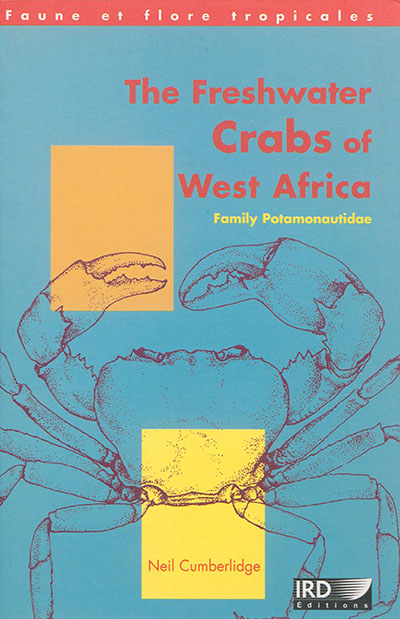en savoir plus

Permet à tous ses détenteurs d'obtenir 5% de réduction sur tous les livres lors du retrait en magasin (réduction non cumulable avec les réductions de type étudiant).
Offre également un certain nombre d'avantages auprès de nos partenaires.
Avec les favoris, retrouvez dans un espace les sélections effectuées au fur et à mesure de vos navigations dans le site.
Constituez pour votre usage personnel vos listes de livres en prévisions d'achats futurs et votre sélection d'articles, dossiers, événements, vidéos ou podcasts préférés ou à découvrir plus tard...
Il suffit simplement de cliquer sur "Ajout Favori" sur chaque page qui vous intéresse pour les retrouver ensuite dans votre espace personnel.
Requiert un compte Mollat
Requiert un compte Mollat
The freshwater crabs of West Africa : family Potamonautidae
Auteur : Neil Cumberlidge
en savoir plus
Résumé
La taxonomie, la répartition et l'écologie de l'ensemble de la faune ouest-africaine de crabes d'eau douce, complétées par les dernières avancées en phylogénie et en biogéographie. ©Electre 2025
Quatrième de couverture
The area of West Africa covered by this book includes eighteen countries from Mauritania to Cameroon and Bioko (Equatorial Guinea). The West African freshwater crab fauna comprises at least thirty-two species in seven genera and two families. This work brings together recent contributions to the taxonomy, distribution, and ecology of the West African freshwater crabs and presents new information on phylogeny and biogeography (in 13 Tables, 69 pages of Figures, and 4 Plates). Four new species are added to the faunal list of the region and a new family, the Platythelphusidae Colosi, 1920 is established.
The phylogenetic relationships of the freshwater crabs of West Africa were examined by means of a cladistic analysis (using PAUP 3.1) that employed thirty-three morphological characters from thirty-two ingroup taxa and five outgroup taxa. Five most parsimonious trees (all with 55 steps, a consistency index of 0.75, and a retention index of 0.79) group the West African species into two lineages, the Potamonautidae and the Globonautinae.
Morphometric relationships of the dimensions and proportions of the carapace revealed trends in changes in the width, length and height of the carapace of species within a genus that could be correlated with the habitat and lifestyle of each species.
The thirty-two species of freshwater crabs found in the West African region are arguably the most diverse in Africa and represent about one-third of the species and subspecies presently known from the continent. Species diversity within the West African region clearly depends on vegetation type, where the highest numbers of species occur in rainforest ecosystems, and the fewest in savanna ecosystems. The species composition of the freshwater crab fauna is distinctly different between the Upper Guinea forest (from Guinea to Togo) and the Lower Guinea forest (Nigeria, Cameroon and Central Africa). The Pleistocene forest refuge hypothesis, which postulates past faunal refuges in small areas of stable, undisturbed forest in West and Central Africa, is supported by distributional data presented here. Aspects of the biology of the West African freshwater crabs, including the respiratory system, reproductive system, growth patterns, development, and ecology are also discussed.
Fiche Technique
Paru le : 23/12/1999
Thématique : Biologie
Auteur(s) : Auteur : Neil Cumberlidge
Éditeur(s) :
IRD
Collection(s) : Faune et flore tropicales
Série(s) : Non précisé.
ISBN : 978-2-7099-1433-8
EAN13 : 9782709914338
Reliure : Broché
Pages : 382
Hauteur: 24.0 cm / Largeur 16.0 cm
Poids: 605 g

